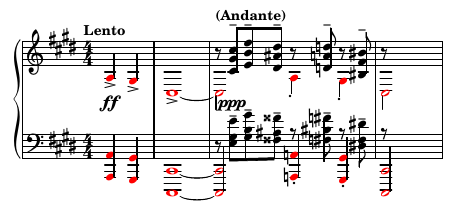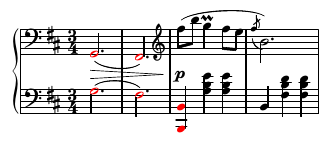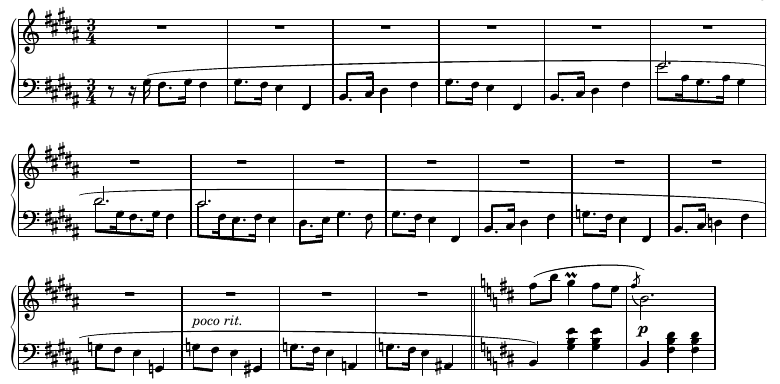Chopin's Mazurkas - Part 5
It's been a while since I've done this as I got a mild obsession with covering guitar solos. But that's over for the moment and I'm excited to pretend to be excited about Chopin's 700 mazurkas. I can't believe I'm only up to Opus 33.
Quatre Mazurkas
For à Mlle la Comtease Mostowka.
Op. 33, No. 1 in G♯ minor
This one is super short and straightforward and I don't much to say. It has some neat little descending chromatic diminished chords that lead into the main theme. The same motif returns a few bars later and it turns out it was diatonic all along. What a tease.
The B section is in the relative major and not very interesting. Yawn.
Op. 33, No. 2 in D major
This one sounds like a stereotypical waltz. The main theme starts in D in forte, repeats in a pianissimo, then modulates to A in forte, then piannisimo, then back to D. It's very pleasant but not much to say.
The B section modulates to B♭ with some dotted eighth/sixteenth patterns. Some
jazzy chords in the right hand allow for the left hand to take over the melody in some
classic V of the V shenanigans of which I am so fond.
An interesting modulation takes place after the first time through the B section, where it throws in a D♭ (B♭ minor instead of B♭ major) and does some classic Chopin trickery to end up in D♭.
And then there's more modulation! Suddenly we're in F♯ major-ish. I guess that's
the enharmonic of G♭, and we ended on a D♭ chord which is the V
of G♭/F♯. Sure. This fun modulation transitions to E which is the
V of A which is the V of D and we're back to the beginning in
classic mazurka style. It was so nice I want to listen to it twice or five times.
For the ending we get a Ballade-ish agitato Coda. And then it ends with some
more implied V of the V with a scale in the higher
registers. Overall a fun little piece, although it's a little repetitive. But
such is the mazurka.
Op. 33, No. 3 in C major
The main theme involves an interesting deceptive cadence, where it makes you
think you're going to end up in A minor (the relative minor of C) but in fact
you end up in A major. This results in the ultra rare V of the
V of the V progression to get back to C (A → D
→ G → C). This is why we all studied the circle of fifths.
For some god-awful reason the performance I'm listening to repeats the main theme even there's definitely no repeat in the score. What a ripoff. This calls for some research.
The B section modulates to A♭. It opens with, surprisingly, not
a V of the V, but in fact a reverse V
of the V. I'm sure this has some kind of name but I'm not
going to look it up (I guess it's a plagal close kind of, but
it's not closing anything).
Op. 33, No. 4 in B minor
This one also starts off with that iv → i
progression we just saw in the previous mazurka. That's followe by
some interesting right-hand solos in the main theme, along with some
fun harmonies with F♯ minor and F♯ major.
The B section gets a little weird with the right hand crossing over the left with some kind of bluegrass reel. I wasn't expecting that.
Then he channels Rachmaninoff from 50 years in the future to get back to the A section.

A mildly thunderous C section mimics the Hammerklavier opening and Chopin remembers there are 88 keys on the keyboard. Then basically the whole thing boringly repeats, and it ends with a variation of the main theme in a major key. Just kidding I thought it ended but there are more pages. Eventually the left hand gets a solo for what seems like an eternity before transitioning via some ascending chromatics back to the A section and mercifully ending.
All in all, not that bad, but like many mazurkas, way too repetive, and unlike many mazurkas, this was too long.












